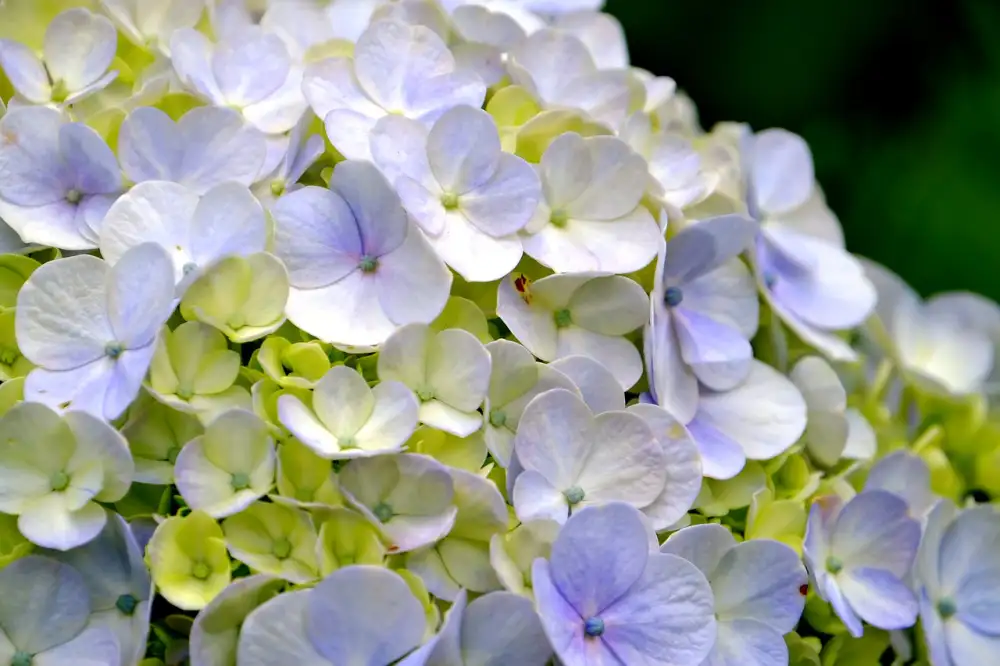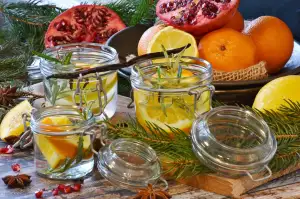Master the Art of Hydrangea Care: Essential Tips for a Blooming Home Garden

Hydrangeas are stunning flowering plants that can add a touch of elegance and beauty to any home garden. With their vibrant colors and large, showy blooms, they are a favorite among gardeners and flower enthusiasts alike. However, to ensure that your hydrangeas thrive and flourish, it is essential to understand the proper care techniques. From choosing the right location to pruning and protecting against pests, this article will provide you with all the essential tips for mastering the art of hydrangea care. So let's dive in and discover how to create a blooming home garden filled with these magnificent flowers!
Choosing the Right Location for Hydrangeas
Choosing the right location for hydrangeas is crucial for their overall health and blooming. These beautiful flowers thrive in areas with partial shade, receiving about 4-6 hours of sunlight each day. Avoid planting them in full sun, as this can cause their leaves to wilt and burn. Additionally, choose a spot with well-draining soil that is rich in organic matter. Hydrangeas prefer slightly acidic soil with a pH level between 5.5 and 6.5. By selecting the perfect location, you set the foundation for a successful hydrangea garden.
Understanding Hydrangea Watering Needs
Proper watering is crucial for the health and vitality of hydrangeas. These stunning flowering plants have specific water requirements that must be met to ensure optimal growth and blooming.
Hydrangeas prefer consistently moist soil, but they don't like to sit in waterlogged conditions. Overwatering can lead to root rot and other diseases, while underwatering can cause wilting and stunted growth.
To determine when to water your hydrangeas, check the moisture level of the soil. Stick your finger about an inch deep into the soil near the base of the plant. If it feels dry at this depth, it's time to water.
When watering hydrangeas, aim for deep and thorough saturation rather than light sprinkling. This encourages strong root development as the roots will grow deeper in search of moisture. Water at the base of the plant rather than overhead to prevent wet foliage, which can lead to fungal diseases.
During hot summer months or drought conditions, hydrangeas may require more frequent watering. Monitor the soil moisture regularly and adjust your watering schedule accordingly.
Remember that different types of hydrangeas have varying water needs. For example, mophead hydrangeas (Hydrangea macrophylla) prefer more moisture compared to panicle hydrangeas (Hydrangea paniculata), which are more tolerant of drier conditions.
By understanding and meeting their specific watering needs, you can ensure that your hydrangeas thrive and reward you with abundant blooms throughout the growing season.
Feeding and Fertilizing Hydrangeas
Feeding and fertilizing hydrangeas is essential for their optimal growth and vibrant blooms. Hydrangeas are heavy feeders, so it's important to provide them with the right nutrients. Start by applying a slow-release balanced fertilizer in early spring, following the package instructions for dosage. This will provide a steady supply of nutrients throughout the growing season. Additionally, you can supplement with a water-soluble fertilizer every 2-3 weeks during the active growing period. Be sure to choose a fertilizer specifically formulated for acid-loving plants, as hydrangeas prefer slightly acidic soil. Avoid over-fertilizing, as this can lead to excessive foliage growth at the expense of flowers. Regular feeding will help your hydrangeas thrive and produce abundant, beautiful blooms all season long.
Pruning Hydrangeas for Optimal Growth
Pruning hydrangeas is essential for promoting optimal growth and maintaining the health of your plants. It helps to shape the plant, encourage more blooms, and remove any dead or damaged branches. The best time to prune hydrangeas depends on the type of hydrangea you have. For mophead and lacecap hydrangeas, which bloom on old wood, it's best to prune them right after they finish flowering in late summer or early fall. On the other hand, if you have a variety that blooms on new wood, such as panicle or smooth hydrangeas, you can prune them in late winter or early spring before new growth begins. When pruning, make sure to use sharp and clean tools to prevent the spread of diseases. Remove any dead or weak branches at their base and cut back about one-third of the oldest stems to encourage new growth. Avoid cutting too much at once as this can stress the plant. By properly pruning your hydrangeas, you'll ensure they stay healthy and vibrant year after year.
Protecting Hydrangeas from Pests and Diseases
To ensure the health and beauty of your hydrangeas, it is important to protect them from pests and diseases. One common pest that can wreak havoc on hydrangeas is aphids. These tiny insects feed on the sap of the plant, causing leaves to curl and flowers to become distorted. To control aphids, you can spray your plants with a mixture of water and insecticidal soap.
Another common problem for hydrangeas is powdery mildew, a fungal disease that appears as a white powdery coating on the leaves. To prevent powdery mildew, make sure your plants have good air circulation by spacing them properly and avoiding overcrowding. If you do notice signs of powdery mildew, treat it with a fungicide specifically designed for this disease.
Slugs and snails are also known to enjoy feasting on hydrangea leaves. To keep these pests at bay, create barriers around your plants using copper tape or diatomaceous earth. You can also handpick slugs and snails off your plants in the early morning or evening when they are most active.
Regularly inspecting your hydrangeas for any signs of pests or diseases is crucial in catching problems early on. By taking proactive measures to protect your plants, you can ensure that they thrive and continue to delight you with their stunning blooms all season long.
Overwintering Hydrangeas in Cold Climates
For those living in cold climates, it is essential to protect your hydrangeas during the winter months. The first step is to ensure that your hydrangeas are well-hydrated before the frost sets in. Give them a deep watering and apply a layer of mulch around the base of the plant to help retain moisture.
Next, consider providing some insulation for your hydrangeas. You can do this by creating a protective barrier around the plants using burlap or frost blankets. This will help shield them from harsh winds and extreme temperatures.
Another important aspect of overwintering hydrangeas is pruning. It's best to wait until early spring to prune your plants, as this will encourage new growth and prevent any potential damage from frost.
Lastly, be mindful of any potential pests or diseases that may affect your hydrangeas during the winter months. Keep an eye out for signs of infestation or disease and take appropriate action if necessary.
By taking these steps to overwinter your hydrangeas properly, you can ensure their survival and enjoy their beautiful blooms year after year.
Troubleshooting Common Hydrangea Care Issues
Despite your best efforts, you may encounter some common issues when caring for hydrangeas. One problem is the lack of blooms, which can be caused by improper pruning or a lack of sunlight. To encourage blooming, make sure to prune at the right time and provide sufficient sunlight.
Another issue is wilting leaves, which can indicate both overwatering and underwatering. Check the soil moisture regularly and adjust watering accordingly. Additionally, yellowing leaves may be a sign of nutrient deficiency. Consider fertilizing with a balanced fertilizer to address this problem.
Hydrangeas are also susceptible to pests such as aphids and spider mites. Regularly inspect your plants for any signs of infestation and take appropriate measures such as using insecticidal soap or neem oil.
Finally, certain diseases like powdery mildew and leaf spot can affect hydrangeas. To prevent these diseases, ensure good air circulation around the plants and avoid overhead watering. If necessary, treat with fungicides labeled for hydrangeas.
By troubleshooting these common issues promptly, you can ensure that your hydrangeas thrive and continue to bring beauty to your home garden.
In conclusion, mastering the art of hydrangea care is essential for creating a blooming home garden. By choosing the right location, understanding their watering needs, feeding and fertilizing them properly, pruning for optimal growth, protecting against pests and diseases, overwintering in cold climates, and troubleshooting common issues, you can ensure the health and beauty of your hydrangeas. With proper care, you will be able to enjoy the vibrant colors and stunning blooms of these magnificent flowers all season long. So go ahead, unleash your inner gardener and delight in the beauty of healthy hydrangeas!
Published: 10. 12. 2023
Category: Home



